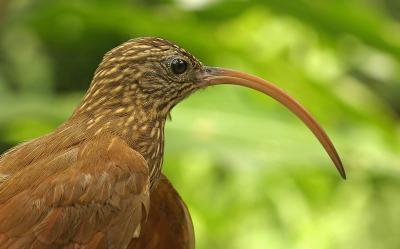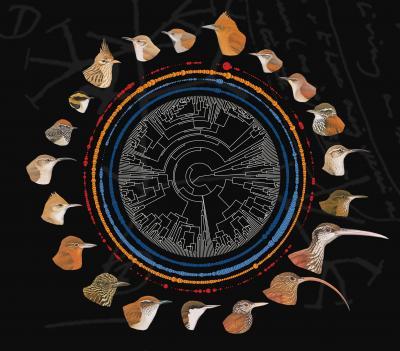Species living together are not forced to evolve differently to avoid competing with each other, a notion that that has been debated since the early days of natural selection.
By focusing on ovenbirds, one of the most diverse bird families in the world, a team conducted the most in-depth analysis yet of the processes causing species differences to evolve. They found that although bird species occurring together were consistently more different than species living apart, this was simply an artifact of species being old by the time they meet. In fact, once variation in the age of species was accounted for, coexisting species were actually more similar than species evolving separately.
"The reason seems to be linked to the way new species originate in animals, which almost always requires a period of geographic separation. By using genetic techniques to establish the age of lineages, we found that most ovenbird species only meet their closest relatives several million years after they separated from a common ancestor. This gives them plenty of time to develop differences by evolving separately," says Dr. Joe Tobias of Oxford University's Department of Zoology, who led the study.

Red-billed Scythebill (Campylorhamphus trochilirostris), a woodcreeper from the ovenbird family. Credit: Joseph A. Tobias
The study compared the beaks, legs and songs of over 90% of ovenbird species. To tackle the huge challenge of sequencing genes and taking measurements, Oxford University scientists were joined by colleagues at Lund University (Sweden), Louisiana State University, Tulane University (New Orleans) and the American Museum of Natural History (New York).
Although species living together had beaks and legs that were no more different than those of species living apart, the most surprising discovery was that they had songs that were more similar. This challenges some longstanding ideas because the standard view for the last century has been that bird species living together would need to evolve different songs to avoid confusion.

A phylogenetic tree illustrating evolutionary relationships and beak variation among 350 lineages of ovenbirds. Credit: Joseph A. Tobias and D. Seddon, images reproduced with the permission of Lynx Edicions.
"Looking at the bigger picture, 'be different or die' doesn't appear to explain evolution," said Tobias. "Ovenbird species use a wide variety of beaks, from long and hooked to short and straight, but these differences appear to evolve when living in isolation, suggesting that competition is not the major driving force producing species differences. Instead, it seems to have the opposite effect in promoting the evolution of similar songs.
"The reasons for this are difficult to explain and require further study, but they may have something to do with the advantages of using the same 'language' in terms of similar aggressive or territorial signals. For instance, individuals of two closely related species with similar songs may benefit because they are able to defend territories and avoid harmful territorial contests not only against rivals of their own species but those in other species coexisting in the same places and competing for similar resources."
"The real novelty of this research is that it takes the evolutionary age of species into account," said Dr. Nathalie Seddon of Oxford University's Department of Zoology, co-author of the study. "A first glance at our data suggests the same patterns that Darwin had expected. It is only when accounting for the fact that species vary in age, and then comparing between lineages of similar age, that the picture changes.
"These insights are the result of a hugely collaborative venture, and a good example of standing on the shoulders of giants. It took almost a decade to compile genetic sequences and trait measurements from 350 lineages of ovenbird. The song recordings were made in over twenty countries by numerous tropical ornithologists, including ourselves, and the museum material was based on specimens collected by hundreds of individuals stretching back to the famous British naturalist Alfred Russell Wallace in the 1860s."
Source: University of Oxford





Comments